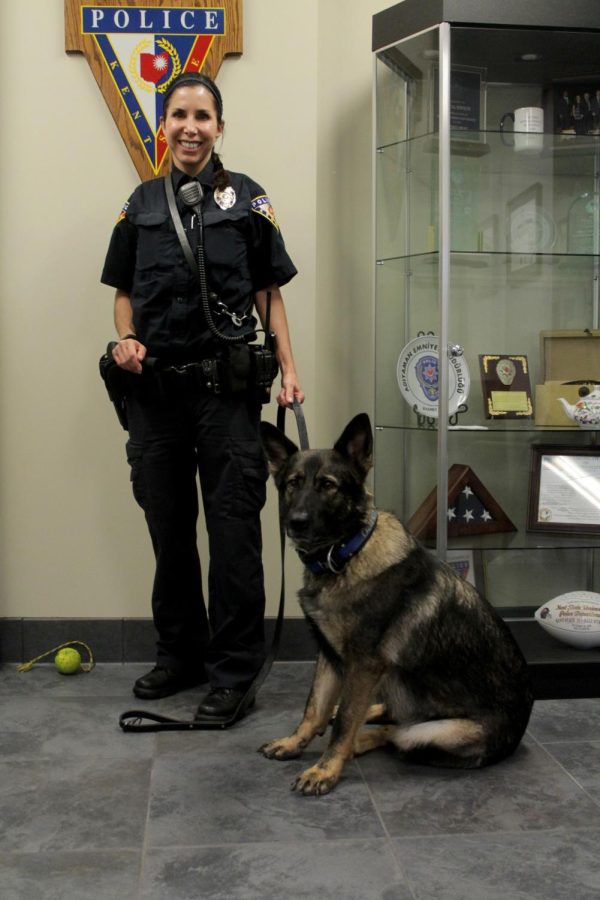Kent State Police strive for equal female representation
Anne Spahr of Bath Township has been with the Kent State Police department for six years. Spahr is a canine officer and works with her partner 4 year old german shepherd Coco.
September 30, 2015
Kent State University Police Services is recognizing the need to accommodate the campus’ 60 percent female and 40 percent male student population by employing eight female officers out of 20.
“When we go and recruit, we’ll try and recruit based off of our demographics,” said Tricia Knoles, a police officer at Kent State. “It’s good for any police department to have matching demographics with their officers compared to their community.”
Knoles, who joined KSUPD in October of 2005, said she’s never had an issue, but noticed there were other departments that would hire the three males on the list over her — even if she were the number one candidate.
“The one thing about our department here at KSU (is) we’re a little bit different,” Knoles said. “We are very diverse.”
Nearby schools, such as The University of Akron, only have four female officers out of the totaled 38 in their department.
According to University of Akron’s admissions office, there are 47 percent female and 53 percent male on UA’s campus as of 2014.
KSUPD is aware of the rising number of female students compared to male students on Kent State’s campus.
Knoles said police officers historically have been men, but more women are joining the field.
“It’s nice to have women…around campus doing different jobs,” said Kianna Franklin, a sophomore nutrition major. “It shows that women can also protect citizens.”
Knoles said nationality and sex of an individual are not the main concern for the job, however the focus is on the job being done correctly.
“It shows that women are a force to be reckoned with,” said Jacob Dunwiddie, a sophomore early childhood education major. “They also show that women can be effective in a male dominated profession and can do a ‘mans’ job just as good, if not better than males.”
Miguel Witt, a K-9 handler and officer at KSUPD, said there are advantages to having female officers specifically on campus.
“Sometimes there are some mental health issues that people feel more comfortable speaking with the female versus a male,” Witt said. “It gives us more options to help the university’s community a bit.”
Knoles said gaining respect in the community is no different than being a male officer. If she treats others with respect, then they will typically treat her the same.
“I don’t have any biases… male, female, whatever, job wise to me they are just a police officer,” Witt said.
For more information, go to www.kent.edu/publicsafety/police-services
Dana Miller is the safety and transportation reporter for The Kent Stater. Contact her at [email protected].












